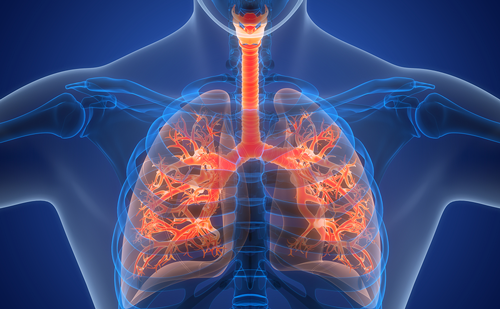Search Results
Showing Results for pulmonary function test

RT234 is a novel investigational therapy combining inhaled dry powder vardenafil with a proprietary oscillating inhaler, designed for rapid, on-demand relief of breathlessness in patients with pulmonary arterial hypertension (PAH). In a phase 2b CPET study, RT234 demonstrated dose-dependent improvements in peak VO₂ and dyspnea. As part of our ATS 2025 coverage, Dr Raymond Benza discusses these findings, current treatment limitations, and the next steps toward a phase III clinical trial.

Future Leader, Dr Michelle Korah-Sedgwick discusses her innovative work at the intersection of immunology and respiratory care, focusing on uncovering immune deficiencies in chronic lung disease. She shares insights on personalized treatment approaches, the value of clinical vigilance, and how registries are transforming care for patients with complex respiratory conditions.

In this episode, Professor Irene Higginson, Director of Better Health and Care Futures at King’s College London, discusses the complex challenges of managing breathlessness. She explores non-pharmacological strategies, the value of multidisciplinary care, and how the Breathlessness Support Services at KCL are transforming patient support. Tune in for expert insights and a look at future directions in breathlessness research and care.

Approximately half of all smokers will develop chronic obstructive pulmonary disease (COPD), with a disease progression over several years before the spirometric threshold for diagnosis is reached.1 There is, therefore, a clear benefit in identifying patients with COPD as early ...

The nasal airway serves as the primary entry point of air and oxygen into the body. It serves critical functions, such as providing a physical barrier against external irritants and pathogens and warming and humidifying incoming air.1 Consequently, disorders of ...

Pentraxin-2 is a member of the pentraxin family of proteins, which includes C-reactive protein (CRP), pentraxin-2 and pentraxin-3.1–3 When initially discovered and characterized, pentraxin-2 was known as serum amyloid P (SAP) due to its isolation from amyloid deposits in humans; ...

Paediatric sleep-disordered breathing Sleep-disordered breathing (SDB) is defined as the disruption of normal respiration and ventilation while asleep.1 SDB encompasses multiple sleep disturbances, ranging from mild snoring to obstructive sleep apnoea (OSA).1,2 OSA is characterized by episodic partial or complete ...

Interstitial lung diseases (ILDs) are a heterogeneous group of disorders characterized by inflammation and/or fibrosis.1 Pulmonary fibrosis develops due to repeated cycles of injury and impaired repair with fibroblast activation and migration with the resultant deposition of extracellular matrix ...

Acute exacerbations of chronic obstructive pulmonary disease (AECOPD) are the dominant cause of the worsening and high mortality of chronic obstructive pulmonary disease (COPD), and are associated with higher healthcare costs as part of COPD management. AECOPD is characterized by ...

The topic of the carbon footprint of human activities is one frequently discussed worldwide. There have been conscious efforts across multiple fields, including healthcare, to reduce their carbon footprint. In Canada, 4.6% of greenhouse gases (GHG) are manufactured by the healthcare ...

The phase 3 BOREAS study (NCT03930732) investigated the efficacy and safety of dupilumab for the treatment of chronic obstructive pulmonary disease with type 2 inflammation. It was a pleasure to talk with Prof. Klaus F. Rabe (University of Kiel, Germany) around the ...

The natural progression of neuromuscular disease (NMD) inevitably involves respiratory system failure. Increasing respiratory muscle weakness causes worsening hypoventilation, leading to hypercapnia and, eventually, hypoxemia. The American College of Chest Physicians (CHEST) recently published guidelines on the respiratory management of ...

Pulmonary alveolar proteinosis (PAP) is a rare pulmonary syndrome with a prevalence of approximately seven cases per 1 million individuals.1,2 PAP affects people of all age, sex, race and socioeconomic status. Based on the largest population studies conducted in the United ...

Alpha-1 antitrypsin deficiency (AATD)-lung disease (LD) is a rare genetic disease caused by a deficiency of the alpha-1 antitrypsin (AAT) protein in the blood and lungs. Loss of the AAT protein reduces inhibition of the proteases, specifically neutrophil elastase, ...

The definition of chronic obstructive pulmonary disease (COPD) has recently been reformulated better to encompass the heterogeneous nature of this lung condition.1 The new definition is broader, includes risk factors other than smoking, and aims to improve the diagnosis, management ...

touchRESPIRATORY were delighted to speak with a valued member of our Editorial Board for touchREVIEWS in Respiratory & Pulmonary Diseases, Dr Ronald Strauss (Case Western Reserve University; Cleveland Allergy and Asthma Center, Cleveland, OH, USA), about the areas in the ...
Latest articles videos and clinical updates - straight to your inbox
Log into your Touch Account
Earn and track your CME credits on the go, save articles for later, and follow the latest congress coverage.
Register now for FREE Access
Register for free to hear about the latest expert-led education, peer-reviewed articles, conference highlights, and innovative CME activities.
Sign up with an Email
Or use a Social Account.
This Functionality is for
Members Only
Explore the latest in medical education and stay current in your field. Create a free account to track your learning.



